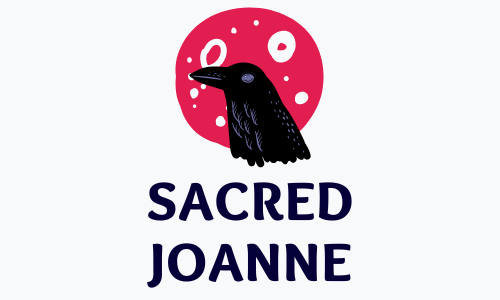ESTP and INFP Relationships: Match Made in Heaven (or Hell)?

Have you ever wondered what happens when an action-oriented ESTP crosses paths with a dreamy INFP?
Well, you’re in for a treat!
Dive into the world of ESTP and INFP relationships and discover how these seemingly opposite personalities can create a beautiful, dynamic partnership.
This article will explore the intricacies of ESTP and INFP interactions, from communication to love and friendship.
We will reveal how they can overcome their differences to form a unique and complementary connection.
So buckle up and get ready to uncover the magic that unfolds when ESTPs and INFPs come together!
Do ESTPs and INFPs Get Along?
Seeking Connection versus Seeking Fun
INFPs desire profound, meaningful connections in their relationships as Intuitive Feeling types.
They aim to assist the people they care about in achieving their best selves by genuinely understanding their motivations.
INFPs are drawn to those who seem idealistic, sensitive, and insightful, favoring connections that advance their own development.
On the other hand, ESTPs, as Sensing Perceivers, are mostly concerned with having fun in the present moment.
This means that in relationships, they seek partners with whom they can easily connect and often prioritize having fun.
As SP types, ESTPs don’t dwell on whether they have meaningful connections with others; they simply want a companion to join them on their wildlife journey.
Initial Differences and Finding Common Ground
At first glance, it may seem that INFPs and ESTPs have nothing in common, but in reality, their perspectives on the world and problem-solving approaches are quite different.
If they don’t find a common interest right away, it could seem like they have nothing in common.
INFPs tend to be idealistic, delicate, and sympathetic, with strong emotions and high regard for their values.
RELATED: How To Seduce an ESTP: Win Over Your Adrenaline Junkie Crush
They are keenly aware of the world’s state and its inhabitants’ emotions, always contemplating ways to improve it.
Their idealism sometimes causes them to lose touch with reality and become absorbed in fantasy.
In contrast, ESTPs are all about action. They prefer getting things done and living in the present rather than in their heads.
They are not very interested in imagination and strive to maintain a strong sense of reality.
ESTPs are too busy enjoying the world as it is to spend much time pondering how it could be different.
The Attraction and Potential Benefits
What could possibly draw INFPs and ESTPs together? Plenty.
For starters, this connection could be just what INFPs need to pull them away from their fantasies and idealized ideas and into the here and now.
ESTPs can help INFPs maintain a sense of balance and bring them back to earth.
RELATED: 25 Unique ESTP Talents You’re Not Aware Of
Moreover, if they persevere, INFPs may discover that they enjoy the company of ESTPs more than anyone else in their lives.
ESTPs tend to be impulsive, hedonistic, and even a bit daring, which can encourage INFPs to take risks they normally wouldn’t.
ESTPs often have more energy than INFPs, and their enthusiasm can sometimes be overwhelming.
Setting boundaries and communicating their needs for privacy may be crucial for INFPs.
Communication Between ESTPs and INFPs

Differing Communication Styles
Any two people can find it difficult to communicate, and the INFP and ESTP personality types are no different.
By being aware of the challenges that often arise when INFPs and ESTPs converse, they can learn to reach agreements more quickly.
For this relationship to succeed, both parties must make allowances for each other’s unique communication styles.
INFPs often communicate in an impersonal, speculative manner, focusing on drawing analogies and deciphering meaning as they investigate the “why” of the subject at hand.
Much of what they say is their notion, hypothesis, or interpretation of what they observe rather than direct observation.
When making plans, they tend to spend a lot of time discussing the overarching goal or theme rather than showing much interest in the specifics of what will happen or how.
RELATED: Why Are INFPs So Cute? A Deep Dive Into Their Adorable Nature
On the other hand, ESTPs typically communicate in a direct, tangible manner that emphasizes facts, details, history, and personal experiences.
When describing something, they focus on the “what,” conveying the information they have personally witnessed or can substantiate with empirical data.
They often concentrate on the precise actions that will take place when making plans and prefer discussing actual events rather than abstract concepts or beliefs.
Finding Common Ground
While it may seem like INFPs and ESTPs are communicating in different languages, the truth is that they are both capable of stepping outside of their comfort zones to find common ground.
In the end, both parties will be happier about it. INFPs can encourage ESTPs to look beyond what is immediately apparent and consider the bigger picture.
In turn, ESTPs can help INFPs regain perspective so that they can discuss the specifics and realities of a situation rather than just the overall concept.
The Dynamics of Introversion and Extraversion
In conversations, INFPs might naturally assume the role of listener, as they are more introverted than their ESTP counterparts.
ESTPs, being more extroverted, will likely speak more quickly and have more to say.
INFPs often feel more comfortable letting others speak first and tend to be a bit more reserved.
They may feel they didn’t get a chance to say anything after talking with an ESTP.
Sometimes, this dynamic can be comfortable, as many introverts enjoy engaging with lively, talkative people who keep the conversation flowing.
Other times, it can be frustrating. Extraverts might assume that since introverts take a little longer to get going, they have nothing to contribute.
RELATED: Most Romantic MBTI: Ranking of Love in the 16 Personalities
ESTPs may continue talking, thinking that no one else will if they don’t break the ice.
In reality, INFPs might appreciate it if their ESTP friends spoke more slowly, asked more questions, and gave them more time and space to express themselves.
Even without the charisma of a talk-show host, INFPs still have something to say. It’s essential for INFPs and ESTPs to ask themselves if the dynamic between them is appealing.
Does the extraverted ESTP allow the introverted INFP to share their feelings and thoughts? Or does the INFP feel overwhelmed and overshadowed?
If the INFP never feels like they can express themselves with the ESTP, it’s time to let them know that their relationship needs some work.
RELATED: Neptune in Taurus: Meaning, Traits & Compatibility
ESTP and INFP in Love
Opposites Attract (Sometimes)
The old saying holds some truth in the case of ESTP and INFP lovebirds. It’s like pairing an action-packed movie with a deep, introspective indie film – an odd combination.
Still, it can make for a captivating experience. The ESTP brings a sense of adventure, spontaneity, and thrill, while the INFP adds depth, warmth, and emotional connection.
Together, they might just create a blockbuster romance!
The Emotional Seesaw
With an INFP’s sensitivity and an ESTP’s propensity for living in the moment, their emotional dynamic can resemble a seesaw – exciting yet potentially nauseating.
While the INFP seeks deep emotional intimacy and long conversations about feelings, the ESTP might be more focused on enjoying the present and having fun.
It’s all about finding the right balance to avoid tipping over.
A Crash Course in Communication
ESTPs and INFPs often approach communication from opposite ends of the spectrum.
The INFP loves metaphors and exploring abstract concepts, while the ESTP is all about facts and tangible experiences.
They might feel like they’re speaking different languages, but hey, love is a universal language, right?
They’ll need to become bilingual in each other’s communication styles to keep the conversation flowing.
The Great Compromise
ESTPs and INFPs can learn a lot from each other when it comes to finding common ground.
The ESTP might teach the INFP to embrace spontaneity and take risks, while the INFP can help the ESTP develop a deeper understanding of their emotions and values.
With a little give and take, their relationship might just be the ultimate personal growth experience!
The Wild Card
When you put an ESTP and an INFP together, you never know what you’re going to get.
Will they unlock the secret formula to a lasting, fulfilling relationship?
Or will they crash and burn in a blaze of passion and misunderstandings?
RELATED: Most Mysterious MBTI Personalities Ranked
Only time will tell, but one thing’s for sure: there’s never a dull moment when these two are together!
ESTP and INFP Friendship
Spontaneity Meets Thoughtfulness
Picture this: the ESTP calls the INFP for a last-minute road trip, and the INFP packs a suitcase full of books, snacks, and emotional support.
The ESTP loves living on the edge, while the INFP is a thoughtful and introspective companion.
Together, they bring the perfect blend of excitement and depth to their friendship, ensuring that every adventure is both thrilling and meaningful.
Endless Debates
ESTPs and INFPs can spend hours debating anything from politics to the meaning of life.
The ESTP brings their practical, action-oriented perspective, while the INFP offers a more idealistic and abstract viewpoint.
It might look like they’re arguing, but really, they’re just engaging in a stimulating exchange of ideas that keeps their minds sharp and their friendship fresh.
The Personal Growth Gurus
As friends, ESTPs and INFPs can help each other grow in ways they never imagined.
The ESTP encourages the INFP to step out of their comfort zone and embrace new experiences, while the INFP helps the ESTP delve deeper into their emotions and values.
It’s like having a personal life coach who’s also your best friend – what more could you ask for?
The Yin and Yang of Socializing
When it comes to social events, the ESTP is the life of the party, while the INFP prefers to stay on the sidelines, observing and absorbing the atmosphere.
RELATED: Most Spontaneous MBTI Personalities: Are You One of Them?
This unique dynamic means they can balance each other out, with the ESTP drawing the INFP into lively conversations and the INFP providing a safe haven when the ESTP needs a break from the limelight.
The Unexpected BFFs
On paper, an ESTP and INFP friendship might seem like an odd match.
But as they say, life is full of surprises!
With their complementary strengths and contrasting perspectives, these two can form a bond that defies expectations and keeps everyone guessing.
Just when you think you’ve got them figured out, they’ll surprise you with a new shared hobby or a deep conversation that leaves you scratching your head – but always wanting more.
RELATED: Mars Trine Neptune Synastry: Love and Friendships Explained
ESTP vs. INFP Values
Compassion and Empathy vs. Practicality and Realism
When it comes to values, INFPs and ESTPs may have some significant differences.
INFPs possess a strong sense of compassion and empathy, which drives their life decisions and shapes their moral code.
They often choose careers that align with their values and seek to positively impact the world.
Their friends typically share their views on what truly matters.
On the other hand, ESTPs are practical and realistic in their approach to values.
While they do care about others, they prioritize more tangible, immediate solutions.
Their acts of kindness are often driven by a sense of duty to society rather than the deep emotional connection that INFPs experience.
Helping others might not be as central to their lives as it is for INFPs.
Idealism and Vision vs. Tradition and Skepticism
INFPs are known for their idealism and ability to envision a brighter future for humanity.
However, ESTPs often have a more grounded view of the world, valuing tradition and experience.
They may be skeptical of new ideas and might dismiss INFPs’ suggestions as unrealistic or impractical.
RELATED: Most Stubborn MBTI Types Ranked (+ What They’re Inflexible About)
But this contrast in perspectives also provides an opportunity for growth.
ESTPs can help INFPs appreciate the benefits of tradition and past experiences.
In contrast, INFPs can encourage ESTPs to develop a more empathetic and emotionally attuned approach to life.
Navigating Value Differences
It’s essential for both INFPs and ESTPs to recognize and work through their value disparities.
While they may have some similarities in areas like religion or politics, their underlying perspectives on the world and what truly matters are fundamentally different.
If they find common ground on moral and ethical issues, it’s likely to stem from distinct reasons and motivations.
Despite these differences, INFPs and ESTPs can learn a lot from each other.
By embracing their contrasting viewpoints, they can introduce one another to fresh perspectives and foster personal growth.
As they navigate their value differences, they can build a stronger understanding of themselves and each other, ultimately enriching their relationship.
ESTPs and INFPs in Daily Life
Shared Unstructured Lifestyles
INFPs and ESTPs both have a preference for unstructured lifestyles, which can lead to challenges in managing daily tasks.
Neither partner is likely to be motivated to maintain a strict schedule, plan, or household routines.
To ensure a smooth coexistence, they should discuss their responsibilities and find a balance between work and play.
Creative Freedom and Fast Pacing
Both INFPs and ESTPs appreciate a certain level of chaos in their lives, as it allows them to exercise their creativity and maintain a fast pace.
However, they process information differently, which may require some adjustments in their daily interactions.
INFPs tend to seek patterns and analogies, while ESTPs focus on the practical aspects of life.
Pursuing Knowledge vs. Experiencing Life
INFPs are driven by curiosity and a desire to learn, often engaging in activities that expand their knowledge.
In contrast, ESTPs are doers who believe actions speak louder than words.
They typically choose hobbies that engage their senses and bodies.
To harmonize their interests, they should find common activities that satisfy both their needs for exploration and hands-on experiences.
Balancing Adventure and Stability
While INFPs crave adventure and novelty, ESTPs prefer stability and may resist change for its own sake.
Rather than viewing this as a source of conflict, they should recognize the value each brings to the relationship.
INFPs can introduce broader perspectives, while ESTPs can help them focus on the present and relevant details.
RELATED: Most Mature MBTI Types: 16 Personalities Ranked
Open communication is key to achieving a win-win situation.
Managing Social Interactions and Communication
INFPs and ESTPs have different preferences for social interactions and stimulation.
INFPs need alone time to recharge, while ESTPs thrive on social activities.
This difference can lead to misunderstandings if not addressed openly.
Both partners should respect each other’s needs and find a balance between solitude and socializing.
Final Thoughts
In conclusion, INFPs and ESTPs can navigate their unique differences to form strong relationships in love, friendship, or day-to-day life.
These two personality types can create a harmonious and fulfilling connection by embracing each other’s perspectives and values and finding a balance between their preferences for socializing, communication, and lifestyle.
Through open communication, understanding, and compromise, INFPs and ESTPs can truly appreciate the richness that their differences bring to the relationship.
RELATED: INTP 8w9: Personality Breakdown
What’s Next?
- The Pros and Cons of Being an INTP Lawyer
- Venus Sextile Pluto Synastry: Love & Friendships Explained
- Pluto Conjunct North Node Synastry: Love and Friendships Explained
- Why Are Spiders Attracted to Me Spiritually?
- Mars Conjunct Ascendant Synastry: Love and Friendships Explained
- Venus Conjunct Ascendant Synastry: Love and Friendships Explained
- Gemini Sun Cancer Moon: Moody Charm
- Cancer Sun Pisces Moon: Elusive Empaths
- The Depressed ENFP: From Isolation to Connection
- Taurus Sun Capricorn Moon: Down To Earth And Sensual
